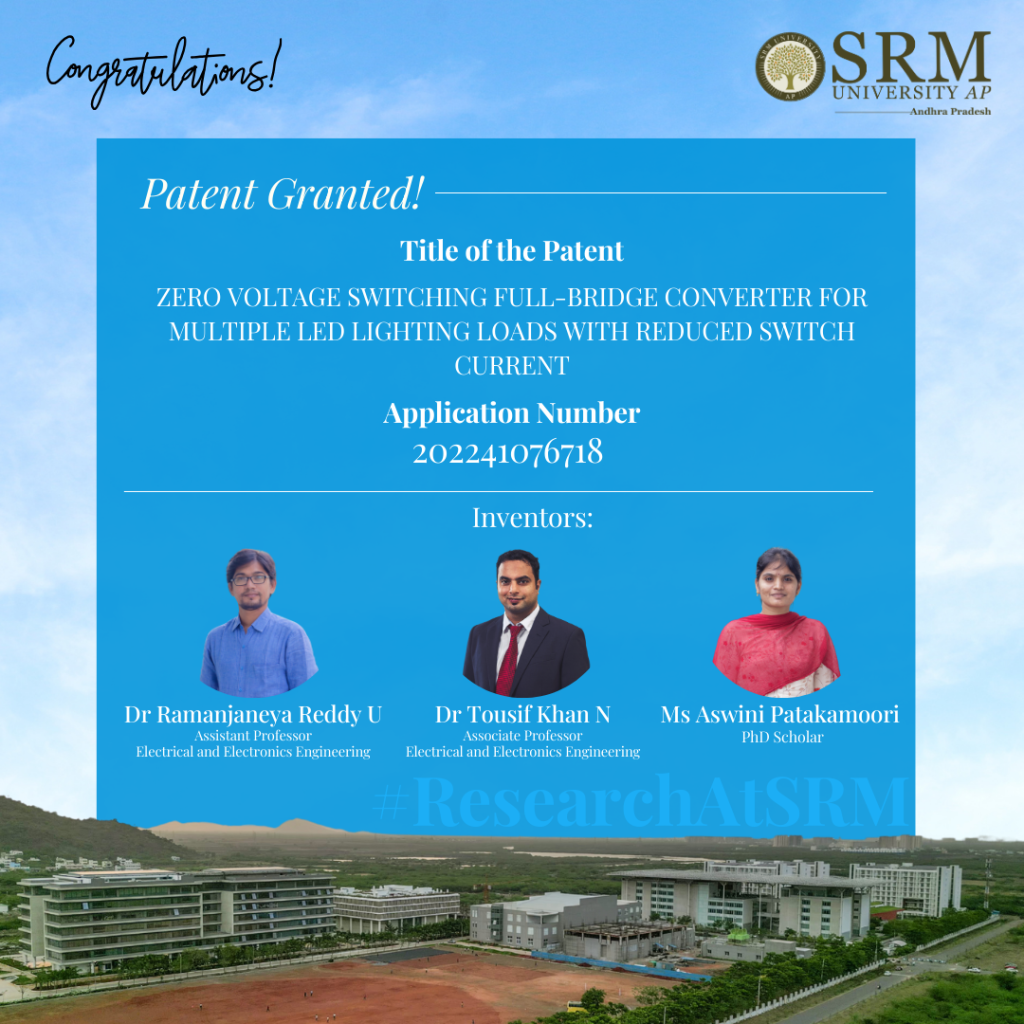
The Department of Electrical and Electronics Engineering proudly announces that the invention “Zero Voltage Switching Full-bridge Converter for Multiple LED Lighting Loads with Reduced Switch Current” with Application number: 202241076718 has been granted to Dr Ramanjaneya Reddy, Assistant Professor, Dr Tousif Khan Nizami, Associate Professor, and Ms Aswini Patakamoori, PhD Scholar in the Indian Patent Office Journal.
The research focuses on creating an energy-efficient power supply for LED lights, especially in areas that use a DC electricity system. The team has designed a system that can power multiple LED lights from a single unit, saving energy and cost. This system works at a very high efficiency of about 97.5%, which means very little energy is wasted as heat.
The special design uses a method called “soft switching,” which helps the internal parts of the system turn on and off with less stress, reducing heat and improving lifespan. It also needs fewer parts for each light, making it simpler, more reliable, and cheaper to produce. Additionally, the system allows the lights to be dimmed easily using a basic on-off control method, giving flexibility in brightness as needed.
Abstract
A 110 W soft-switched full-bridge multiple load LED driver is designed for DC-grid applications, achieving a high efficiency of 97.52%. The full-bridge configuration ensures that the switches carry minimal current, reducing conduction losses, and offers zero-voltage switching, significantly lowering switching losses. The reduced component count per lamp simplifies the design, enhances reliability, and reduces overall system costs. Additionally, the driver supports PWM-based dimming through simple on-off control, offering flexibility in illumination levels.
Practical Implementation/ Social Implications of the Research
The developed 110 W soft-switched full-bridge multiple-load LED driver is a highly efficient and scalable solution tailored for DC-grid applications, particularly those integrated with solar and battery-based energy systems. Operating at an impressive efficiency of 97.52% ensures minimal energy loss. This technology promotes sustainable development by enabling cleaner energy usage and reducing carbon emissions. Its simple, cost-effective design makes advanced lighting more accessible, especially in low-income or remote communities. Additionally, the ability to dim lights easily helps conserve energy further and allows users to adapt lighting to different needs, enhancing comfort and minimising waste.
Future Research Plans
To design more efficient, adaptable, and sustainable LED driver circuits,
- Extending soft-switching techniques to automotive, industrial, and smart lighting systems for broader applications.
- Incorporating digital control strategies for intelligent dimming, adaptive power regulation, and real-time performance monitoring.
- Exploring advanced semiconductor materials, such as Gallium Nitride (GaN) and Silicon Carbide (SiC), to enhance switching performance and thermal stability. Integration of energy harvesting techniques to create self-sustaining LED driver systems powered by renewable sources such as solar energy.

